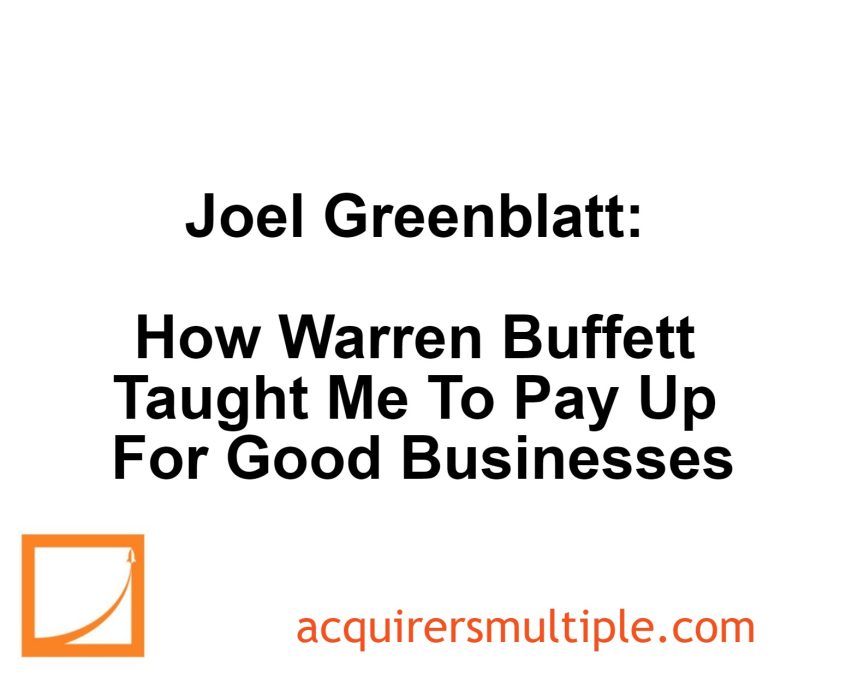In this interview with The Investor’s Podcast, Joel Greenblatt reflects on his investment approach, explaining how he initially sought both cheap and good businesses, but struggled to understand the value of paying more for quality.
He discusses his decision to downsize his business and return outside capital when he couldn’t find enough of these opportunities. Greenblatt highlights Moody’s as one of the first companies he was willing to pay over 20 times earnings for, drawing inspiration from Warren Buffett’s 1990s purchase of Coca-Cola.
After reverse-engineering Buffett’s strategy, he recognized the importance of paying a reasonable premium for high-quality, capital-efficient businesses.
Here’s an excerpt from the interview:
Greenblatt: Just to change that, even reading enough Buffet and following everything he does, really even before 1990, I would say I wanted to buy good businesses.
I was just cheap, but I wanted everything. And one of the reasons that I downsized my business after five years and then gave back all the outside capital is because I wanted to own both cheap and good.
And it’s too bad if I can’t find that much of this, I’m just going to give back money and just stay in cheap and good. I didn’t understand good. And I think you properly bring up well, when could I pay what in my mind was a lot of money or fair value for something in a good business?
And that’s what you’re bringing up. Moody’s was one of the first that I was willing to pay over 20 times earnings for, at that time was a lot because interest rates were much, much higher.
It was one of the best businesses out there because it took no capital and they had a brand and a franchise and there were only a few people.
There were a lot of good things about Moody’s. I actually loved the business, went back and reverse engineered as you suggested Buffett’s purchase of Coca-Cola.
I believe that was in 1990 or so or whatever it was, went back to look at what he paid and made adjustments for the differences in the businesses, for instance Coke had to reinvest some of its money to grow. And Moody’s really didn’t.
So you got to keep more of your earnings in Moody’s. So I was willing to pay a little more and made an adjustment for that. Just went to see what am I actually paying for Moody’s today relative to what Buffett paid for Coke where he quadrupled his money in the next five or eight years, whatever it was?
And I thought any percentage of that would be pretty good for me, especially if I thought this was that kind of business.
It turned out that if you want to put apples to apples, he paid $10 for Coke, when I made all the adjustments, we were paying $13 for Moody’s on this equivalent basis.
But if the $10 was going to quadruple, 13 going to 40 was also pretty good as opposed to 10 going to 40 and thought that was a reasonable premium to pay because these quality businesses that you can buy anywhere close to what you think they might be worth buying.
And so just comparing things, it was such a great model to use to get me into paying up for great, great businesses.
You can listen to the discussion here:
For all the latest news and podcasts, join our free newsletter here.
Don’t forget to check out our FREE Large Cap 1000 – Stock Screener, here at The Acquirer’s Multiple:



